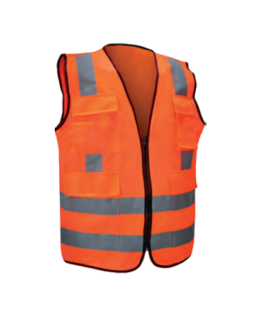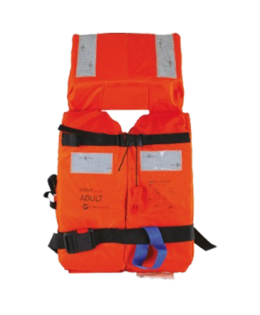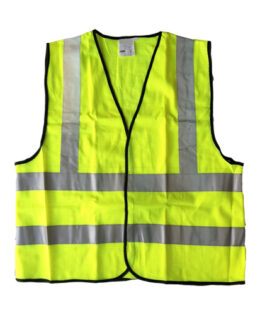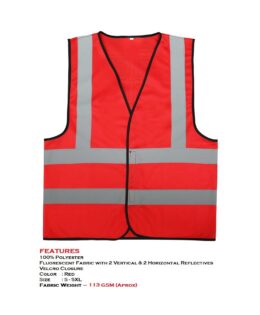Home » Personal Protective Equipment (PPE) » Safety Jacket
Safety Jacket
Safety Jacket
A safety jacket is an item of Personal Protective Equipment (PPE) designed to protect the wearer from a variety of direct and passive hazards. These hazards include being hit by moving objects, hit by vehicles and equipment, falls, impact, and exposure to hazardous materials. Safety jackets are typically made of highly visible fabric and similar materials, such as fluorescent yellow or orange, to make the wearer more visible to others. Normally these will also have reflective strips or other features to improve visibility in low-light conditions.
Safety jackets are a part of uniform wear for a variety of workers, including construction workers, road workers, firefighters, and law enforcement officers. They are also useful for the noticeability of cyclists while cycling, motorcyclists, and other road users.
Different Types of Safety Jackets
There are many different types of safety jackets available in the market. Each of them has a different design for specific purposes. Some of the most common types of safety jackets include:
High-visibility jackets: These jackets are made of highly reflective materials to make the wearer visible to others from afar. They are often used by workers who are working in areas with high traffic or low visibility, such as construction sites and road work areas.
Impact-resistant jackets: These jackets are designed to protect the wearer from impact injuries. They are often made of materials that are strong and flexible, such as Kevlar or Nomex. Impact-resistant jackets are common among workers who have more exposure to falls or other impact hazards, such as window cleaners, construction workers, and firefighters.
Chemical-resistant jackets: These jackets are designed to protect the user from exposure to dangerous chemicals. They are often made of materials that are resistant to chemicals, such as neoprene or PVC. Naturally, users of chemical-resistant jackets are workers who have more exposure to chemicals, such as firefighters, cleaners, chemists, and laboratory workers.
Waterproof jackets: These jackets are designed to protect the wearer from rain and snow. They are often made of materials that are waterproof and breathable, such as Taffeta, Gore-Tex, etc. Waterproof jackets are common among workers working outdoors in wet conditions, such as construction workers, traffic police, and road workers.
Benefits of Wearing a Safety Jacket
There are many benefits to wearing a safety jacket. Here are some most important benefits:
Increased visibility: Safety jackets make the wearer more visible to others, which can help to prevent accidents.
Protection from impact injuries: Impact-resistant jackets can help to protect the wearer from impact injuries, such as bruises, cuts, and fractures.
Protection from exposure to hazardous materials: Chemical-resistant jackets can help to protect the wearer from exposure to hazardous chemicals, which can cause burns, respiratory problems, and other health problems.
Also, protection from the elements: Waterproof jackets can help to protect the wearer from rain, snow, and other weather conditions.
How to Choose a Safety Jacket
While choosing a safety jacket, it is important to consider the following factors:
- The type of hazard that the jacket will be protecting against.
- The environment in which the jacket will be worn.
- Size and fit of the jacket.
- Comfort level of the jacket.
- And the price of the jacket.
- Certification – It is also important to make sure that the safety jacket is certified by an independent testing organization, such as the National Institute for Occupational Safety and Health (NIOSH). This certification ensures that the jacket meets certain safety standards.
How to Care for a Safety Jacket
- It is important to care for a safety jacket properly to ensure that it continues to provide protection. Some of the most important care tips include:
- Inspect the jacket regularly for any signs of damage.
- Wash the jacket according to the manufacturer’s instructions.
- Do not dry clean the jacket. Ironing of the jacket also may not require, if do, with low heat and avoiding reflective strips
- Store the jacket in a cool, dry place.
By following these care tips, you can help to ensure that your safety jacket has a longer life.
Safety jackets are an important part of PPE that can help to protect workers from a variety of hazards. By choosing the right safety jacket and caring for it properly, you can help to ensure your safety on the job.
For any kind of safety jacket, please visit the UAE distributor M/s. Three Colours Safety Eqpt Trdg LLC, Sharjah. WhatsApp: +97155-968 0202, e-mail: info@tcgroupuae.com
Showing 1–12 of 14 results












